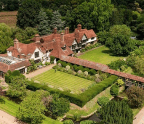
AMID a hoard of silver coins discovered in the Wiltshire village of Sevington was a two-pronged silver fork identified by archaeologists as Saxon, pre-dating the Norman Conquest by at least two centuries. Its burial alongside valuable coins points to its status for its first owner.
In the 9th century, a fork was a rarity in English life, evidence perhaps of overseas trading links. Sources suggest forks were used in this period by Persian nobles, a habit that subsequently spread across the Byzantine Empire, including to the Byzantine princess who, in 1004, married the Doge of Venice and earned round condemnation for her use of a two-pronged gold fork to spear chunks of food cut up for her by attendant eunuchs. St Peter Damian explained her subsequent death




